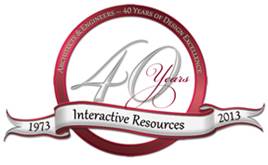
Interactive Resources Celebrates 40 Years
Why Richmond?
Shirley and I came to live in Richmond quite by accident. In the spring of 1973, I completed graduate school at UCLA with a Master’s Degree in Architecture and Urban Design. Shirley was due to start the Master of City Planning program at U.C. Berkeley in the fall. We were living temporarily in an apartment in Mill Valley, where I was planning, along with several friends, to set up a multidisciplinary consulting firm specializing in planning, design, construction and real estate.
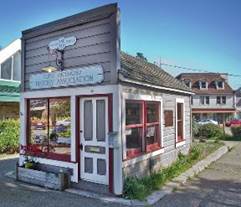 We were also looking at buying a home, and with my prospective professional future in Marin County and Shirley attending U.C. Berkeley for the next two years, we focused on southern Marin and Berkeley as potential locations. In numerous trips back and forth across the Richmond-San Rafael Bridge, we couldn’t help but notice the intriguing neighborhood of Point Richmond. In those days, the highway went right through the edge of the small business district where Tewksbury is now, so we passed through it on every trip to Berkeley and back to Marin.. We were also looking at buying a home, and with my prospective professional future in Marin County and Shirley attending U.C. Berkeley for the next two years, we focused on southern Marin and Berkeley as potential locations. In numerous trips back and forth across the Richmond-San Rafael Bridge, we couldn’t help but notice the intriguing neighborhood of Point Richmond. In those days, the highway went right through the edge of the small business district where Tewksbury is now, so we passed through it on every trip to Berkeley and back to Marin..
Point Richmond was very sleepy in those days. Many storefronts were vacant, and several were being used as dwellings. There were lots of bars, some frequented by Hell’s Angels. But Point Richmond had charm. On one particularly hot August afternoon, we decided to stop for a cold beer at one of the quieter bars – a place known as the Pool Hall (now Little Louie’s Deli). Next door was the real estate office of Jack Stoddard. The Hotel Mac, across the street, was a burned out hulk. “Do you have any homes for sale?” we asked. Laid back Jack replied, “Sure, here are the keys. Go check them out. If you see something you like, let me know.” That was the first time we saw the incredible views from the “back” side of Point Richmond. Being halfway between Marin and Berkeley, being really cheap, and having proximity to the Bay made Point Richmond the new focus of our house hunt.
As it turned out, we did not buy a home through Jack Stoddard, but we did purchase a modest place a week later through another Point Richmond broker and local character, Ruby Hazel Carr. Hazel’s office was the building that now houses the Point Richmond History Association. I first learned about the Richmond shipyards from Hazel, who came to Richmond during WW II and found work on the Kaiser Shipyards security detail. With the number of women in the workforce, Kaiser needed to also have women on its security force. Hazel, a big woman from Oklahoma, landed one of the jobs. She had some interesting stories about corralling rowdy “Rosies” during those auspicious times.
We moved into our small 800 square foot home on Western Drive in September of 1973, and in October, Interactive Resources was incorporated. Our only project was designing a garage for a triplex in Sausalito, and I was the only employee. Our office was the eight by twelve foot second bedroom in our tiny new house.
In December of 1973, my other senior partner, John Clinton, made ready to join in, and we needed some real office space. I had known John, who was originally from Illinois, since 1969, when we served together in the Corps of Engineers in Vietnam. I was surprised to run into him two years later on the Sausalito ferry. At the time, we were both frustrated with our jobs in San Francisco and were thinking of starting our own business. John was and is both a licensed architect and structural engineer.
Not only did we then live in Richmond, it seemed like a place with a lot of potential for growth, and there were almost no other architects or engineers located in town.
I went to see Realtor Jack Stoddard and noticed that he was using only about one fourth of the space in his office. “Would you be interested in sharing your space?” I inquired. “As long as I don’t have to do anything or spend any money, you’re welcome to come in,” he replied.
Carefully working around Jack during the Christmas holidays, we turned half of his office into a two-person architecture-engineering firm. Business was slow at first, but being around Jack provided one solution. I had always been interested in real estate economics and development, and in fact my master’s thesis at UCLA was a joint effort involving the Graduate School of Architecture and Urban Planning and the Real Estate Department of the Graduate School of Management. I had a real estate license, and I began selling real estate part-time to supplement our meager architectural income. During that first year, the real estate commissions exceeded architectural fees, and they were particularly welcome because Shirley, who had supported us when I was in graduate school, was then back in school full-time.
The History of Interactive Resources
The 1970s (click for more)
Interactive Resources was founded in 1973 by five individuals who shared a vision for an architecture and engineering firm that would provide comprehensive interdisciplinary services, from site acquisition through project planning design and construction. The name of the firm, "Interactive Resources", was originally conceived to describe this goal of bringing together several design disciplines to better integrate the architecture and engineering professions.
The founding partners were Tom Butt, FAIA, John Clinton, SE, AIA, George Faucette, Robert Johnson, and Patrick Leamy, AIA. Only Tom Butt and John Clinton went on to establish Interactive Resources; the others remained in their existing occupations and eventually relinquished their ownership in the business.
Tom Butt and John Clinton first met as engineer officers in the U.S. Army Corps of Engineers in Vietnam in 1969, HHC, 159th Engineer Group, headquartered at Long Binh, Vietnam. The two became reacquainted in 1971 while commuting into San Francisco on the Sausalito Ferry.
Interactive Resources opened its first office in Point Richmond in 1973, just a block north of where the firm is located today. Tom Butt (a licensed architect, general contractor and real estate broker) and John Clinton (a licensed architect and structural engineer) were the first full-time employees. Charles (Chuck) Beavers, AIA, joined the firm in 1975, and was later promoted to vice-president. Ed Anisman, AIA, who came aboard in 1977, is currently one of the firm's principals.
When the firm formed in 1973, the energy crisis resulting from the Middle East oil embargo was already in full swing. Responding to widespread panic characterized by long lines at service stations and rapidly rising energy prices, Interactive Resources quickly gained a reputation for energy-efficient design and alternative energy applications. The firm erected the first (and at the time, also the largest) wind generator to feed power into an electrical grid in California. Some of the first "solar" homes in California were designed by Interactive Resources, and the firm initiated, and for several years sponsored, statewide conferences on the use of solar and wind energy. Interactive Resources' work in California in the 1970s and early 1980s influenced subsequent state energy conservation legislation and sped the incorporation of energy conservation considerations into the mainstream of California architectural practice.
The 1980s (click for more)
By 1980, Interactive Resources operated as three "divisions": Structural Engineering, Architecture and Solar. The Architectural Division had also operated, beginning in 1977, a construction management service, with projects including the rehabilitation of Hotel Mac, the Richmond Plunge, the Winters Building, and Steamer Gold Landing.
In the early 1980s, the tax incentives and high energy costs that had made solar energy applications and energy efficient design a strong market began to fade. Energy efficient design was no longer a pioneering specialty; it had been institutionalized into building codes. In 1981, Interactive Resources' Architectural Division designed its last custom home project and turned its focus to commercial, government and institutional design projects, with clients such as Chevron and several local, state and federal government agencies. About the same time, the firm took on its first "forensic" project, which involved diagnosing the source of leakage and water damage in a building, designing repairs and providing technical support for litigation.
Several of the firm's senior architects and engineers joined Interactive Resources during the 1980s. This included the late Calvin Chooey, AIA, who was an expert on forensic and diagnostic services. Calvin Chooey was a 22-year employee of Interactive Resources and a firm principal. He passed away on October 5th, 2008, following a short illness.
There was another severe recession in the early 1980s, and work had almost dried up except for a hotel project on the Florida Coast near Palm Beach. Most of the staff moved with families to Florida for several months in 1982 to design the project, leaving only a few people behind. The hotel clients went bankrupt, and some went to jail, but we eventually got paid. The economy improved, and we all reassembled in California.
In 1977, Interactive Resources had formed a real estate investment partnership and purchased the building at 117 Park Place in Point Richmond, where the firm is still located today. In 1986, the building was expanded to 8,000 square feet plus a 4,000 square foot basement. By 1989, Interactive Resources had grown to nearly 60 employees, and had filled not only the 117 Park Place building but also annexes adjacent to and behind the main building.
The real estate industry boomed in California in the late 1980s, and Interactive Resources responded by expanding its services for developers. One resulting project was the Wareham Development Point Richmond Tech Center, first occupied by Pixar Animation Studios.
When the Loma Prieta earthquake hit in October of 1989, Interactive Resources was called in on an emergency basis to evaluate the condition of Candlestick Park, which was hosting the third game of the World Series during the tremor. An emergency response team of engineers and architects was dispatched immediately to the stadium, to perform a visual inspection and identify areas damaged by the earthquake. Following the identification of problem areas, Interactive Resources worked on the scene with contractors, the City staff and stadium management to ensure that Candlestick Park was repaired to its original condition and was ready for the resumption of the World Series ten days later.
The 1990s (click for more)
The early 1990s are remembered as the bust that followed the boom. Real estate development dried up as did the firm's development and historic preservation projects. Forensic architecture and engineering, earthquake repair work and public agency projects dominated the firm's work. Like most Bay Area firms, the number of employees at Interactive Resources shrank to less than a third of what it had been a few years earlier.
During the 1990s, Interactive Resources landed two separate multi-million dollar contracts with the General Services Administration. The firm provided Building Evaluation Reports (assessments of the condition and repair needs of existing buildings) and Prospectus Development Studies (detailed work plans for a proposed new building or for the renovation of an existing building) for dozens of federal buildings. The firm also provided repair, design and security upgrade services to federal buildings throughout the West Coast and Hawaii.
In 1995, Interactive Resources absorbed the staff of another Richmond architecture firm, Cometta-Cianfichi, which had specialized in community college projects for many years. The late Paul Cianfichi, AIA, continued to manage the community college work until 1999, at which time he left for other career opportunities. Today, two former Cometta-Cianfichi employees remain with Interactive Resources, including George Namkung, AIA, and Sabrina Kurita.
In the final years of the 1990’s, Interactive Resources realized one of its earliest visions: the successful development of real estate projects that reflected the firm's design values. Partnerships headed by Interactive Resources had purchased two large partially vacant parcels in Point Richmond in the late 1970s and early 1980s, but it was twenty years before real estate economics made them ripe for development. The resulting mixed-use urban infill projects, Mariner Square (completed in 1999) and Baltic Square (completed in 2002), complement and blend in with existing historical structures in the Point Richmond Historic District.
The 2000s
In the first decade of the 2000’s, Interactive Resources weathered another recession by concentrating on public works projects, and diagnostic and forensic services, neither of which was significantly affected by the economic downturn, In fact, ARRA pumped a lot of money into the public sector. Multiple project contacts with the Federal General Services Administration, U.S. Postal Service, BART, AC Transit, California Department of General Services, school districts, counties and cities kept the firm going until the private sector emerged again after the first decade of the 2000’s. The firm also went back to its energy roots, becoming a major provider of structural engineering for solar photovoltaic projects and designing many projects certified LEED Silver and Gold as well as school project meeting CHPS (Collaborative for High Performance Schools).
Andrew Butt, AIA, Ed Anisman, AIA, Jamie Brown, AIA, George Namkung, AIA and Paul Westermann, SE, all became shareholders in the 2000s. In 2012, John Clinton, AIA, SE, a founding shareholder, retired after 39 years with Interactive Resources.
Currently, Interactive Resources has a stable and diverse workload that includes education projects, diagnostic and forensic services, historic preservation, solar photovoltaic installation and building envelope consulting.
Interactive Resources’ clients include the Federal General Services Administration, the California Department of General Services, US Postal Service, PG&E, Bio-Rad Laboratories, AC Transit, BART and a number of cities, counties and school districts.
The 2000s
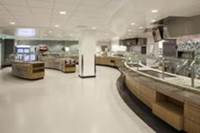 |
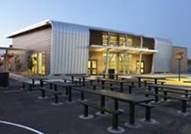
|
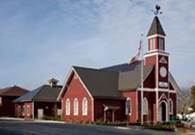
|
Above, Cafeteria remodel at 300 N Los Angeles Federal Building — LEED Gold |
Above, Multipurpose Facility is first phase of Nystrom School Rehabilitation designed & constructed to CHPS (CHPS (Collaborative for High Performance Schools) Standards |
Above, Novato City Council Chambers and Community Center Rehabilitation |
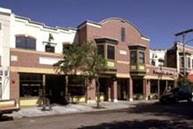
|

|
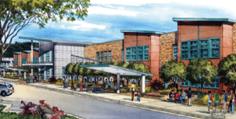
|
Limoneira Solar Orchard & Visitor Center has avoided 30,386,350 pounds of CO2 – LEED Gold |
Above, Baltic Square in Point Richmond |
Above, rendering of Woodrow Wilson Elementary school modernization |
|
The 1970s
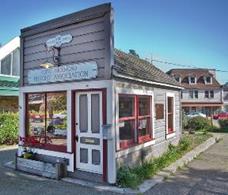
Above, Hazel Carr’s Real Estate Office
in 1973 – Now Point Richmond History Association
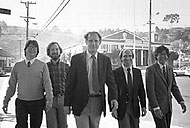
Above, Chuck Beavers, Dale Sartor,
Tom Butt, John Clinton and Carl Bovill
in the 1970s
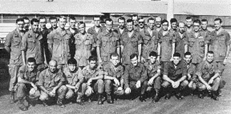
Above, 159th Engineer Group, Headquarters Company, Vietnam 1969. Tom Butt, 54th from left, John Clinton, 8th from left
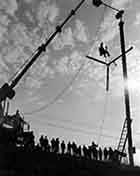
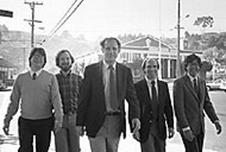 Above, First wind generator in Above, First wind generator in
California to cogenerate on the grid erected by Interactive Resources
in Point Richmond
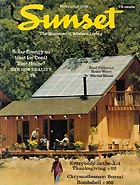
Above, solar home in Sonoma
designed by Interactive Resources on
the cover of Sunset Magazine
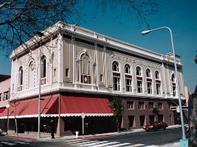
Rehabilitation of the 1924 Winters Building, Richmond, CA, preserved the building for over 30 years until it was gutted and rehabilitated again in 2010
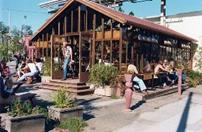
Above, popular Cafe Flore in San Francisco utilized a greenhouse 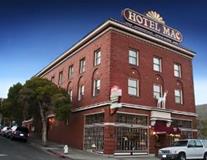
Above, Hotel Mac rehabilitation,
Richmond, CA
The 1980s
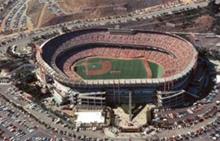
Above, Candlestick Park Structural Investigation and Repair
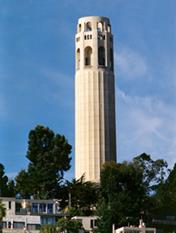
Above, structural repair and waterproofing
of Coit Tower
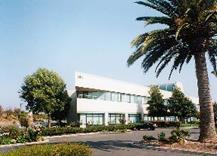
Above, Point Richmond Tech Center, first occupied by Pixar Animation Studios
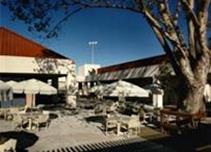
Above, PG&E Richmond Service Center
The 1990s
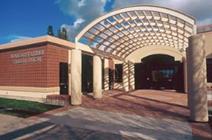
Above, Diablo Valley College Margaret Lesher Student Union, Pleasant Hill, CA
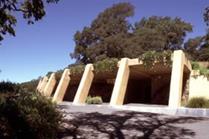
Above, Stag’s Leap Wine Cellars Cave Entry, Napa, CA |

